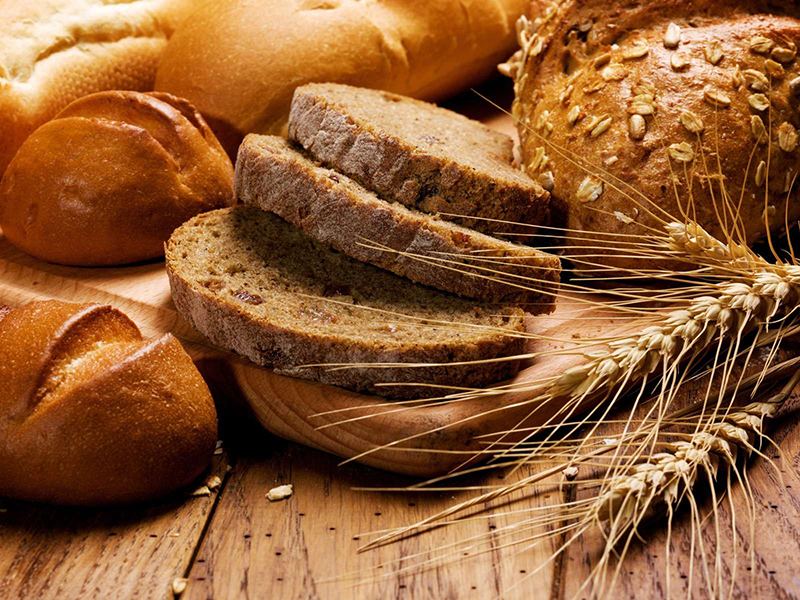Wheat supplies are shrinking and it’s bad news for bread prices

Crop losses in two of the world’s biggest wheat exporters and quality concerns in a third have pushed prices to multiyear highs, adding to worries about food price inflation for millions of the world’s most vulnerable.
Drought and heat continued to fry Canada’s wheat in July, months after a brutal winter hit the Russian crop. Those losses will only be partially offset by gains elsewhere for a crop planted on more land globally than any other, and used for basic foods like breads, pasta, and breakfast cereal.
Wheat futures surged this week as the U.S. Department of Agriculture slashed its forecast for Canadian and Russian production, pulling down global stockpiles and trade. A smaller U.S. crop is also adding to the pressure.
The impact will be felt by households and governments alike, especially in poorer nations reliant on imports. And in the U.S. and elsewhere, higher bread costs would be another pressure point for a food supply chain already grappling with labor shortages and logistical snarls.
“Consumers are going to see higher prices, no question about it,” James Doyle, executive vice president at King Milling Co. in Lowell, Michigan, said in an interview. “The price that we pay for wheat as the futures rise, whatever that price is at the time a baker calls, gets translated right then and there into the flour price.”
Wheat’s rally to multiyear highs has also been contra-seasonal, coming when grain silos in the Northern Hemisphere are typically starting to bulge with freshly-harvested supplies. Global reserves could sink to a five-year low, the U.S. government forecast, with supplies in exporters particularly strained.
“The market’s looking at a global deficit now,” said Carlos Mera, head of agricultural commodity markets research at Rabobank in London. “That heightens food inflation concerns. Wheat is an essential food staple.”
A wheat export price index calculated by the London-based International Grains Council is now up 46% on the year. Separately, the UN index of global farm-commodity prices is flirting with a decade high.
Grocery Bills
As the basis of everything from French baguettes to Middle Eastern flat-breads to Asian noodles, wheat prices have a more direct bearing on consumers than crops like corn and soybeans, which are mostly fed to animals.
Commodity fluctuations can take time to trickle through the supply chain. Retail prices can also be sticky, and in some cases food costs are subsidized by governments. But higher costs now mean the grain could stay elevated until harvests in the Southern Hemisphere in early 2022 relieve the pressure.
Freight costs to transport grain around the world are also surging. In all, the blow looks particularly harsh for poorer, import-reliant nations already battered by the coronavirus pandemic.
The USDA this week lowered its 2021-22 wheat import forecasts for the North African region, Southeast Asia and Afghanistan.
“I’m afraid this is a situation that I do not see any relief,” said Abdolreza Abbassian, economist at the United Nations’ Food and Agriculture Organization. “There’s so many factors that are unfortunately favoring domestic inflation levels in many parts of the world.”
Exporters Hit
Russia has been the backbone of global wheat trade for the past few years, often the largest single exporter.
This year’s shrinking crop coincides with the Russian government’s effort to stem rising food prices of its own, by taxing cargoes bound for export. That could see buyers shifting to sellers like the European Union and Ukraine.
Paris milling-wheat futures soared 9.5% on the week to the highest since 2012.
The EU wheat crop is bigger this year — 138.6 million tons versus 125.9 million, according to the USDA — but relentless rain in France and Germany has impeded the harvest. That’s hurt quality parameters like the so-called specific weight, reducing the amount of flour a given amount of grain produces.
“There will be the availability, now it will be a discussion for these type of criteria,” Philippe Heusele, general secretary of French wheat farmers’ group AGPB, said by phone.
Importers Struggle
Many countries keep a buffer of grain on hand to prevent supplies from running short, as food shortages are often a precursor to social instability. Buyers will eventually need to restock, and with prices soaring, that comes at a cost to importers’ budgets.
Egypt’s president recently urged higher prices for the subsidized bread it offers its citizens, part of a push to lower government spending. Meanwhile, a streak of crop tenders from Turkey to Jordan have been canceled or purchases have been lower than expected as importers face sticker-shock.
“It’s going to be a struggle,” Mera said. “Sooner or later, they’ll have to come back to the market and pay the price.”
Read also
Wheat in Southern Brazil Impacted by Dry Weather and Frosts
Oilseed Industry. Leaders and Strategies in the Times of a Great Change
Black Sea & Danube Region: Oilseed and Vegoil Markets Within Ongoing Transfor...
Serbia. The drought will cause extremely high losses for farmers this year
2023/24 Safrinha Corn in Brazil 91% Harvested
Write to us
Our manager will contact you soon



